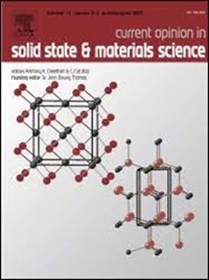Probing the Near-Atomic Scale Structure of Hard Biological Materials with Atom Probe Tomography: A Review
IF 13.4
2区 材料科学
Q1 MATERIALS SCIENCE, MULTIDISCIPLINARY
Current Opinion in Solid State & Materials Science
Pub Date : 2025-10-05
DOI:10.1016/j.cossms.2025.101241
引用次数: 0
Abstract
Atom probe tomography (APT) is a powerful analytical technique that generates atom-by-atom reconstructions of matter, providing quantitative three-dimensional elemental and isotopic analyses at near atomic-scale resolution across the entire periodic table. It has advantages in chemical sensitivity, spatial resolution, and 3D compositional reconstruction capability. Atom probe tomography was originally applied in the discipline of metallurgy, and has recently expanded to multiple new disciplines, including semiconductors, geology and biology, due to the ability to study less conductive materials that is afforded by laser-induced evaporation within the atom probe. Breakthrough research findings on the near atomic-scale structure of biological materials, such as bone and teeth, have been reported in the last decade, and we now have the opportunity to develop atom probe to utilise the technique for further breakthroughs in medical science and beyond. Here we review studies of the near atomic-scale structure of hard biological materials with atom probe tomography. We cover challenges associated with the analysis of biomaterials and possible solutions, including specimen preparation of non-conductive biological composite materials, bespoke optimisation of atom probe experimental running parameters, interpretation of complex mass spectra, and understanding the reproducibility and accuracy of the 3D atomistic reconstructions.
用原子探针层析成像技术探测硬生物材料的近原子尺度结构综述
原子探针断层扫描(APT)是一种强大的分析技术,可以生成物质的原子-原子重建,在整个元素周期表中提供近原子尺度分辨率的定量三维元素和同位素分析。它在化学灵敏度、空间分辨率和三维成分重建能力等方面具有优势。原子探针层析成像最初应用于冶金学科,最近扩展到多个新学科,包括半导体,地质学和生物学,因为能够研究原子探针内激光诱导蒸发提供的低导电性材料。在过去的十年中,关于生物材料(如骨骼和牙齿)的近原子尺度结构的突破性研究成果已经被报道,我们现在有机会开发原子探针,利用该技术在医学科学和其他领域取得进一步突破。本文综述了用原子探针层析技术对硬质生物材料近原子尺度结构的研究。我们涵盖了与生物材料分析相关的挑战和可能的解决方案,包括非导电生物复合材料的样品制备,原子探针实验运行参数的定制优化,复杂质谱的解释,以及对3D原子重建的可重复性和准确性的理解。
本文章由计算机程序翻译,如有差异,请以英文原文为准。
求助全文
约1分钟内获得全文
求助全文
来源期刊

Current Opinion in Solid State & Materials Science
工程技术-材料科学:综合
CiteScore
21.10
自引率
3.60%
发文量
41
审稿时长
47 days
期刊介绍:
Title: Current Opinion in Solid State & Materials Science
Journal Overview:
Aims to provide a snapshot of the latest research and advances in materials science
Publishes six issues per year, each containing reviews covering exciting and developing areas of materials science
Each issue comprises 2-3 sections of reviews commissioned by international researchers who are experts in their fields
Provides materials scientists with the opportunity to stay informed about current developments in their own and related areas of research
Promotes cross-fertilization of ideas across an increasingly interdisciplinary field
 求助内容:
求助内容: 应助结果提醒方式:
应助结果提醒方式:


